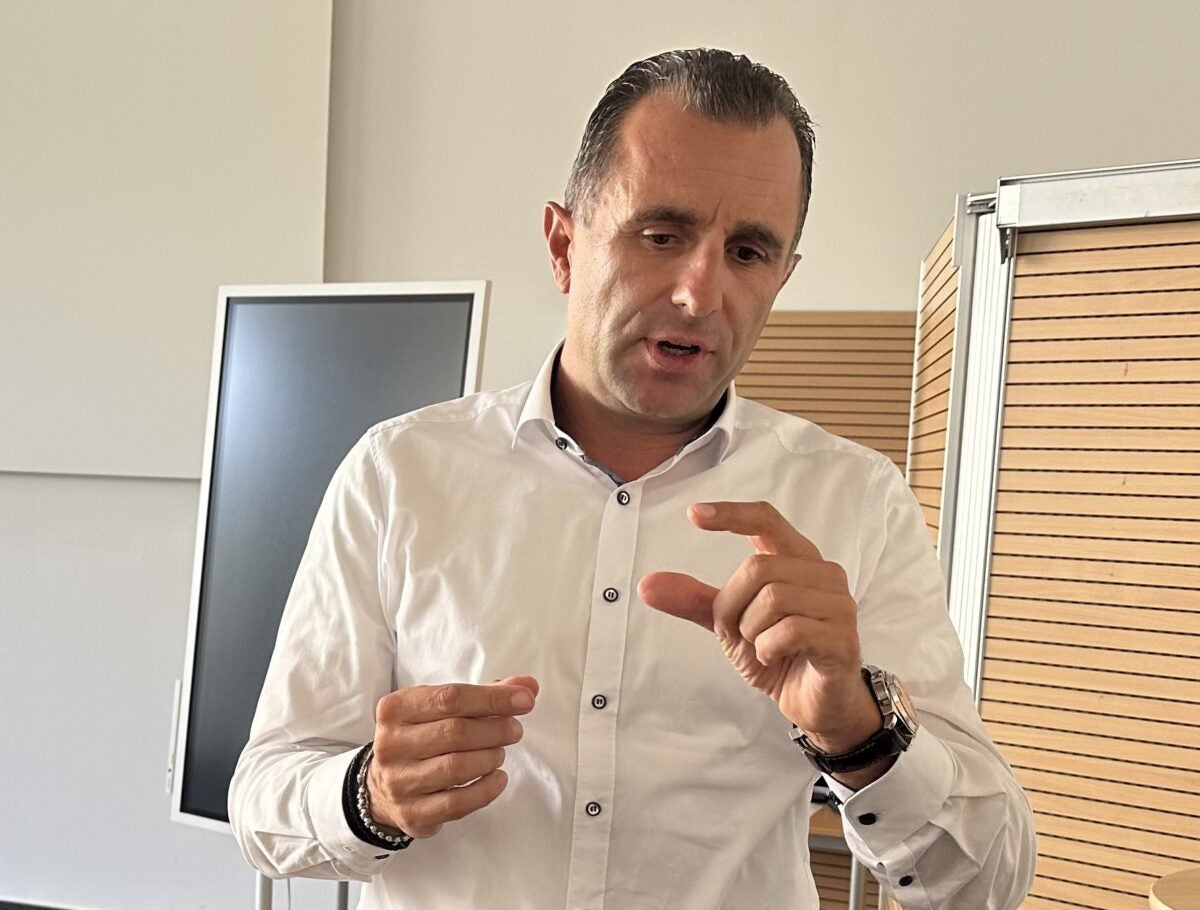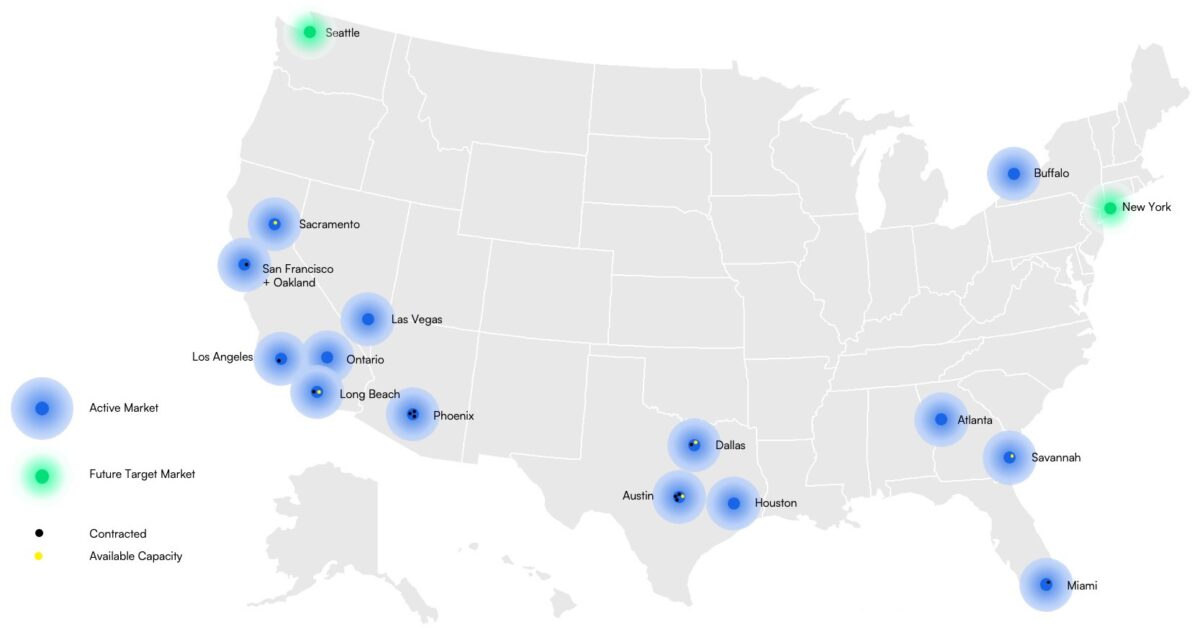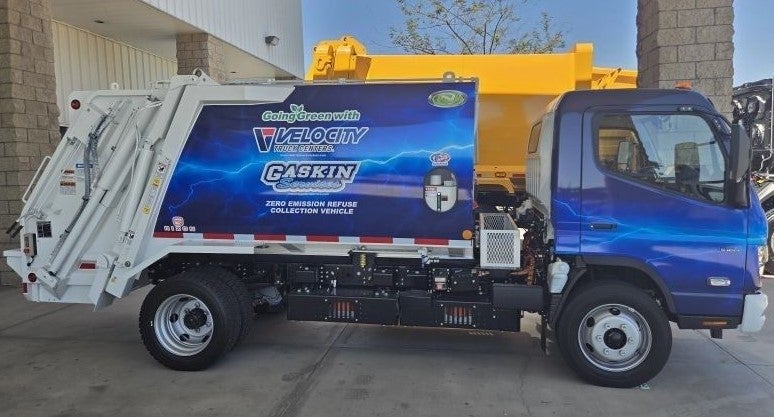Volvo Trucks North America started using zero-emission electric trucks for in-bound logistics in 2021. It told fleets that to qualify to bring parts to Volvo plants, they would need VNR Electric trucks.
Freight forwarders complied. Watsontown Trucking Co. and Camrett Logistics ordered Class 8 VNR Electric trucks in October 2021. They began round trips to NRV in December of that year. Ryder System Inc. likewise leased seven VNR Electric trucks to transport pallets of components for heavy-duty Mack trucks to a kitting facility in Pennsylvania.
Daimler Truck North America started the electrification of inbound logistics about a year ago. It’s unclear whether an order to use eCascadias was involved. In September, J.B. Hunt Transport began using eCascadias in aftermarket logistics. That followed DTNA implementing electrified inbound logistics at plants in the Pacific Northwest, North Carolina and Mexico.
Thinking about a recent visit to Daimler Truck plants in Europe, it seemed like a good time for an update of a subject covered earlier this year.
On the road with a German freight forwarder
German freight forwarder Walter Schmitt GmbH logistics uses six Mercedes-Benz eActros 300 electric trucks to service Daimler plants in Gaggenau, Kassel, Mannheim and the massive Wörth assembly complex. It also purchased two Volvo electrics for customers who supply Volvo plants.
Schmitt is among European fleets testing the long-haul eActros 600. The new truck claims a single-charge range of 500 kilometers or 311 miles.
Truck Tech recently rode along with Schmitt driver Klaus Whener on part of the 209-mile run from Kassel to Wörth am Rhein, Germany. He was hauling a trailer of truck axles, including two electronic axles for installation into eActros 600s at Wörth.
“I was fairly surprised by the range of this truck,” Whener told me as he fingered the eActros 600’s five regenerative brake settings that captures heat generated by the brakes being applied and returns it to the battery.
“Daimler promises a range of 500 kilometers. I have reached a range of nearly 650 kilometers with 22 tonnes [48,400 pounds] of axles,” Whener said.
Schmitt expects to take delivery in early 2025 of 10 eActros 600s. Each costs about two and a half times as much as a $130,000 diesel model, or about $325,000.
A European take on electric-powered logistics
Fleets are willing to invest in electric trucks if they see a path to total-cost-of-ownership parity with diesel. In Europe, carbon taxes assessed on diesel trucks make that possible. But the availability of public charging infrastructure is still a challenge, said Oliver Berger, Daimler Truck director of inbound logistics. “The grid is the limit at the moment, unfortunately.”
Europe has about 600 charging stations for trucks. It needs 35,000, or construction of about 400 chargers per month. Daimler is constructing a 7-megawatt charging station at Wörth.

Berger is confident Daimler will meet its goal of every truck bringing goods to Worth by 2026 with no tailpipe emissions.
“Logistics has a big impact on emissions,” he said. “We see some of the freight forwarders are hesitating. They are not really sure if the time is now and if it’s the right product for heavy-duty, long-distance transportation. We want to convince them by being a role model for this.
“We don’t have to convince the people and the management within this company that it’s necessary to do something,” he said, adding that it is critical for the health of his three young children if not the planet itself.
Best candidates are often family-owned companies
When it comes to selling electric trucks for logistics, Berger said family-owned companies are often more receptive than the large companies, even those with public sustainability targets.
“In the end, if you have convinced the CEO,” the sale is made, he said.

Rainer Schmitt is managing partner Walter Schmitt GmbH, which happens to bear his family name. Schmitt’s 100 trucks make 400 trips daily from the company’s eight locations. He expects 20% of his fleet to be electrified by early 2025.
Leasing electric trucks costs more upfront. But blending preset utility rates for depot charging with what Daimler charges for electricity at its facilities – and avoiding the carbon tax charged on diesel trucks – helps make the total cost of ownership work even with the cost of on-site infrastructure, Schmitt said.
TruckWings crosses a billion highway miles
TruckWings, the active aerodynamic device that automatically deploys at highway speeds to close the gap between heavy-duty trucks and trailers, has crossed the billion-mile mark.
That’s equivalent to more than 10 trips from Earth to the sun.
Independent third-party testing by MVTS showed that TruckWings technology can boost vehicle efficiency by up to 6.2%. This translates to cost savings and contributes to reduced carbon emissions.
Tracking mileage and performance of trucks equipped with a TruckWings device, the technology includes cloud-connected telematics for real-time data, including uptime reporting. Fleets can monitor and analyze the improvement in vehicle efficiency.
TruckWings, which started in 2014 as XStream, was acquired in November by Vancouver, Washington-based tractor-trailer parts and components maker ConMet.
“We have learned from every mile with every customer to build the most robust, highest performing products yet,” Daniel Burrows, vice president of TruckWings at ConMet, said in a release.
Briefly noted …
Startup infrastructure provider Voltera has acquired two additional sites for charging depots in Wilmington and West Sacramento, California.

Daimler Truck North America has delivered 20 zero-emission battery-electric Freightliner eCascadia Class 8 tractors to Reyes Beverage Group with nine more on the way.
Electric vehicle charging provider ChargePoint is offering Level 2 alternating current chargers for $699, suitable for smaller commercial vehicles and passenger EVs.
Powering America’s Commercial Transportation, an industry lobbying group seeking faster development of charging infrastructure for medium- and heavy-duty electric trucks, will work with the Edison Electric Institute toward its goal.
The Fuso eCanter outfitted as a refuse truck was on display at the recent IAA Transportation show. It turns out that Velocity Truck Centers in California already has a Rizon version.

American Class 4-5 entry? (Photo: Daimler Truck Asia)
The Coalition for Renewable Natural Gas reports that the number of RNG stations has grown 44% over the past year to 433 facilities.
Truck Tech Episode No. 87: Volvo expands reach of Blue Service Contract for all-new VNL
That’s it for this week. Thanks for reading and watching. Click here to subscribe and get Truck Tech delivered to your email on Fridays. And catch the latest episodes of the Truck Tech podcast and video shorts on the FreightWaves YouTube channel. Send your feedback on Truck Tech to Alan Adler at aadler@firecrown.com.







